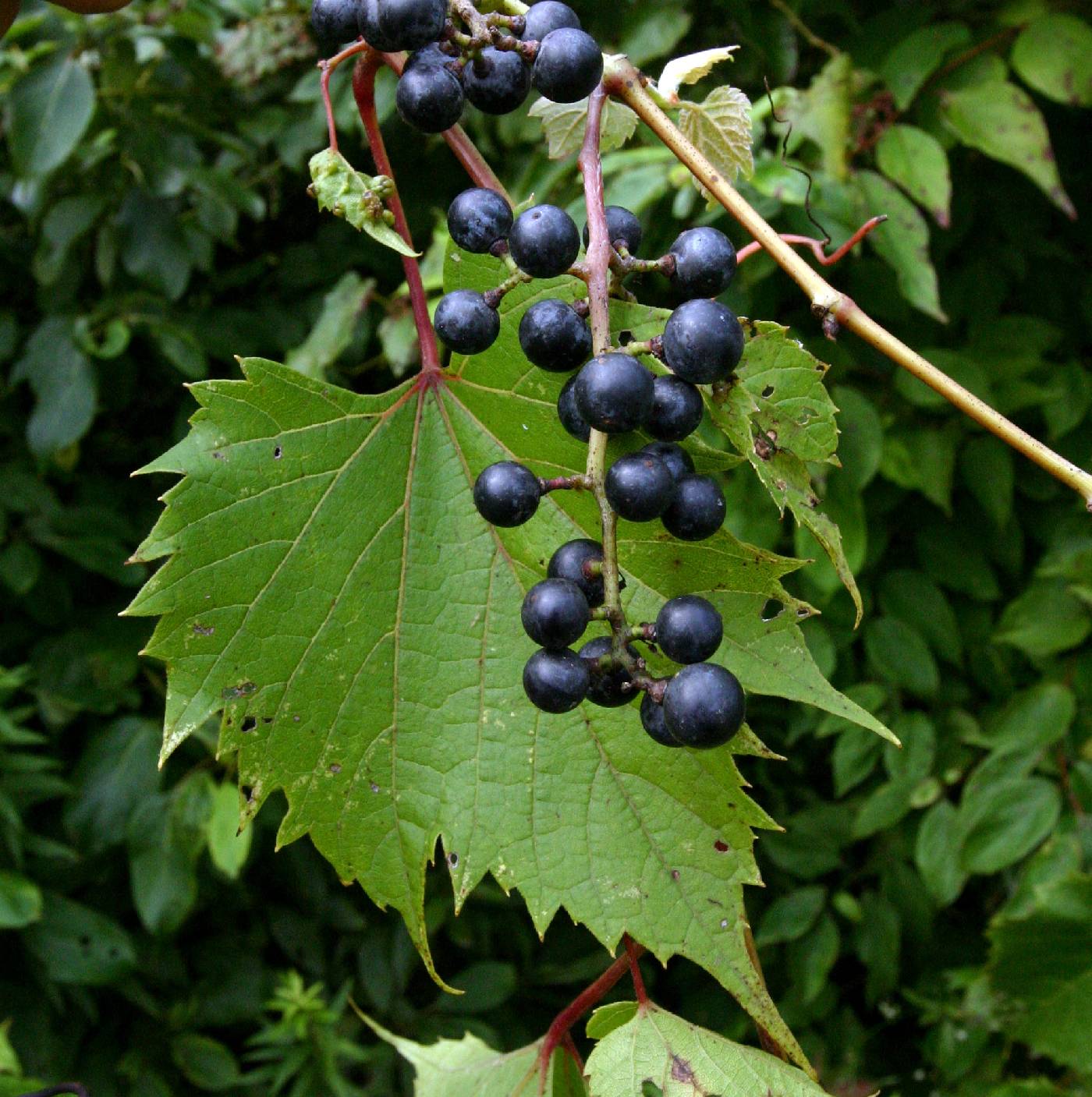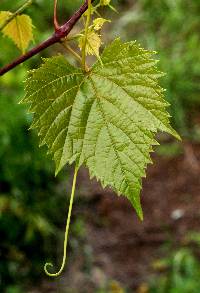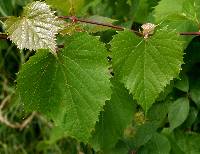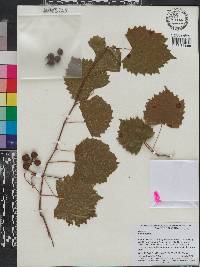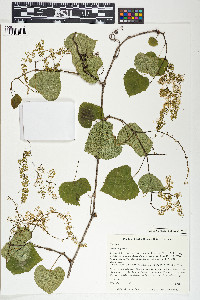Perennial woody vine to 18.3 m long
Stem: high-climbing, grayish green when young, becoming reddish brown and lightly ridged, and finally grayish brown and furrowed on very old growth, inner spongy part of stem (pith) chambered (1 mm or thicker) at nodes.
Leaves: alternate, stalked, dark green above, paler beneath, 5 - 15 cm long, rounded to egg-shaped or heart-shaped with a pointed tip, lobeless or slightly three-lobed, coarsely toothed with teeth wider than long and convex on one or both sides, with a hairy lower surface when young, remaining hairy in vein axils at maturity.
Inflorescence: functionally either male or female and found on the same plant (sub-monoecious), borne opposite most leaves on current year's growth (commonly lacking every third leaf), 10 - 15 cm long, loosely flowered.
Flowers: yellowish green, tiny, five-petaled. The functionally male flowers have five long, erect stamens and a poorly developed pistil. Functionally female flowers have a well-developed pistil and five functionless, short, reflexed stamens.
Fruit: a juicy berry, glossy black, 5 - 10 mm long, spherical, thin-skinned, rarely covered with a waxy whitish coating (glaucous), containing two to four seeds. The seeds are grayish brown, about 6 mm long, and ridged.
Tendrils: opposite most leaves, commonly lacking every third leaf.
Similar species: Vitis aestivalis and Vitis cinerea var. cinerea have tendrils or inflorescences at no more than two successive nodes. Vitis labrusca has tendrils or inflorescences at three or more successive nodes and a lower leaf surface that remains densely hairy. Vitis riparia has fruit covered in a whitish waxy coating and leaves with teeth that are longer than wide.
Flowering: May to June
Habitat and ecology: Uncommon in low or rich woods, wooded thickets, and along fencerows.
Occurence in the Chicago region: native
Notes: Birds and mammals eat the fruit of this species, while deer feed on the leaves. The vines are commonly used in wreath-making. This species has been cultivated since 1806 and is very tolerant of cold. European grapes are grafted onto this rootstock.
Etymology: Vitis is the Latin word for vine. Vulpina refers to a fox, which eats the fruit.
Author: The Morton Arboretum

